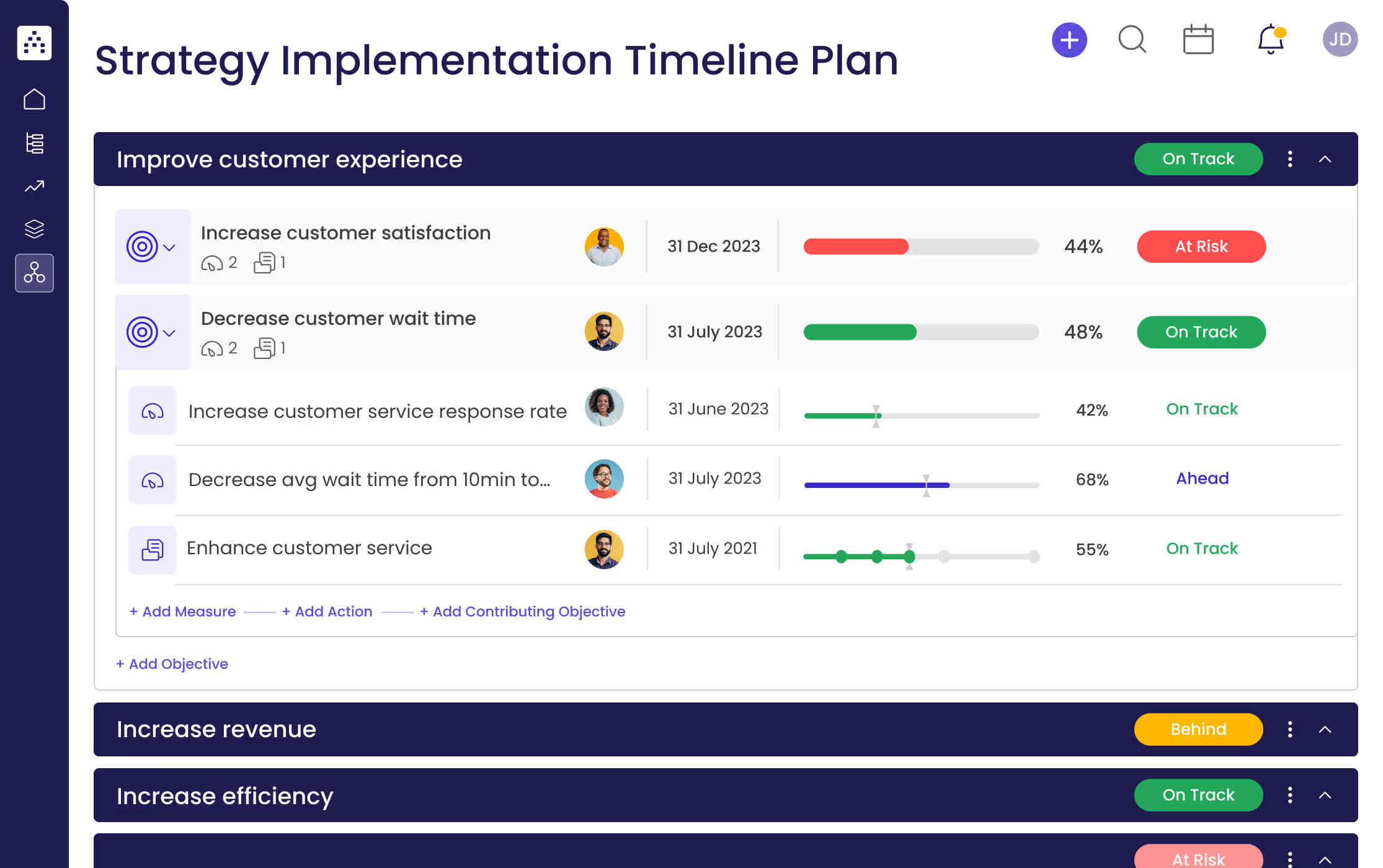What is a Strategy Implementation Timeline?
A strategy implementation timeline is a detailed plan that outlines the step-by-step process for executing a chosen strategy over time. This timeline will depict key milestones, responsible parties, and deadlines to ensure successful execution. It helps organizations stay focused on their goals and stay on track toward achieving them.
What's included in this Strategy Implementation Timeline template?
- 3 focus areas
- 6 objectives
- 6 projects
- 6 KPIs
Each focus area has its own objectives, projects, and KPIs to ensure that the strategy is comprehensive and effective.
Who is the Strategy Implementation Timeline template for?
The strategy implementation timeline template is designed to help businesses and organizations outline a detailed plan for the successful execution of their chosen strategy. It is a useful tool that can be used for any type of strategy and can help ensure that key milestones, responsible parties, and deadlines are all met.
1. Define clear examples of your focus areas
A focus area is a broad area of work that has been identified as having the potential to contribute to the successful implementation of the strategy. Examples of focus areas can include customer experience, revenue growth, efficiency improvements, and more. It is important to define clear focus areas to ensure that the strategy is properly implemented and that the desired results are achieved.
2. Think about the objectives that could fall under that focus area
Once the focus areas have been identified, it is important to set objectives that will help to achieve the desired outcomes of the strategy. These objectives should be specific, measurable, and achievable. Examples of objectives could include increasing customer satisfaction, decreasing customer wait time, increasing revenue, or reducing operational costs.
3. Set measurable targets (KPIs) to tackle the objective
Key Performance Indicators (KPIs) can be used to measure the progress of the strategy and help to ensure that the objectives are being met. Examples of KPIs could include increasing customer service response rate by 20%, decreasing average wait time by 30 seconds, increasing conversion rate by 5%, or increasing average spending per customer to $50.
4. Implement related projects to achieve the KPIs
Once the objectives and KPIs have been set, it is important to implement related projects in order to achieve the desired outcomes. These projects should be specific and measurable, and should be designed to help reach the strategy’s objectives. An example of a project related to Improve customer experience could be: Develop documentation and support material to enhance customer service.
5. Utilize Cascade Strategy Execution Platform to see faster results from your strategy
Cascade Strategy Execution Platform is a powerful tool that helps businesses and organizations successfully implement and execute their chosen strategies. It allows for the creation of detailed strategy implementation timelines, which can help ensure that goals are met and that strategies are implemented successfully and efficiently.


